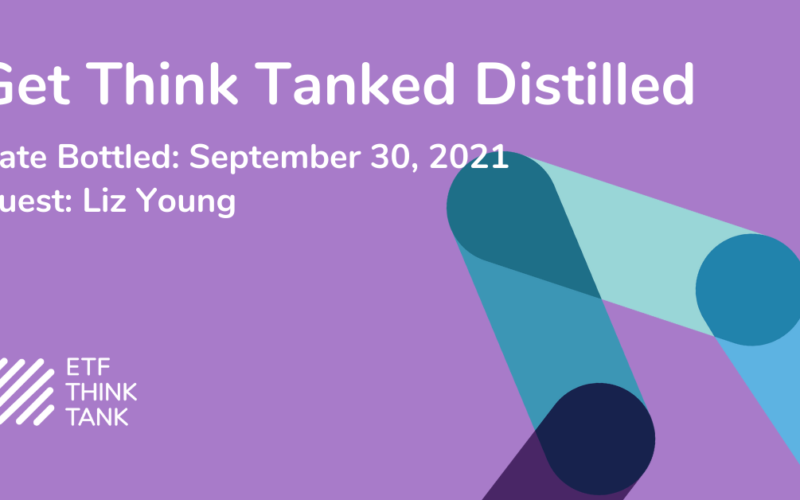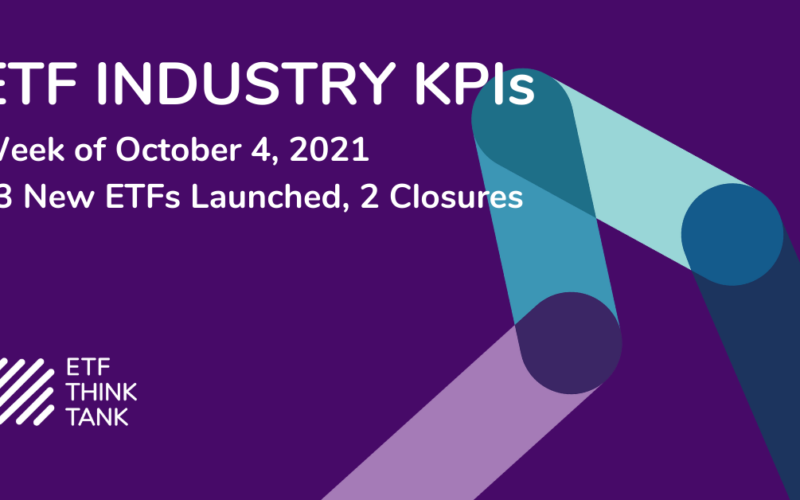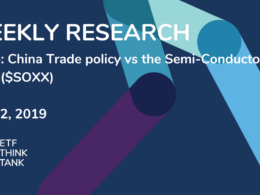Open Platforms Will Win the Investor Battle
It used to be “cool” to speak about the “ETF Revolution” as a means of democratizing investing. Early ETF adopters will recall that it was this philosophy that encouraged ETF evolution during the first phase of growth. Then came the second phase of growth, which involved lower fees and the beginning of platform constrains in 2008. Now, after a period of new closures in 2020, it is clear the evolution is again exploding with innovation through new listings. There have been 437 new ETF listings in the past 12 months, which is a 10.8% increase. Now, 2.88 ETFs are launched for every closure. Few understand why the change has so much momentum, but the answer may simply be that conditions have changed. Specifically, conditions have changed in terms of the influence from retail investors and a proliferation of open platforms. Additionally, investors have a greater desire to seek alpha via thematic targeted solutions that address diversification or high active share. Also, with the further shift in fixed income, investors are more open to alternative risk-based solutions.
Retail Stock Market Influence
The work-from-home lifestyle and the GIG Economy were growing trends way before Covid, but as we shift back towards normalcy, there is some permanence to these changed conditions. We agree that not all companies can be as effective when operating with a completely remote structure. But many young successful investors (retail) who feel empowered by newfound easy wealth are not likely to go back enthusiastically to their day job. Hopefully going broke will not be the solution! Trading can be intoxicating. Moreover, while markets will make all of us humbler, let us not forget the Hertz moment when every institution said there was no value in buying the stock – and it turns out retail was right. Retail was also right about AMC and countless other stocks. Retail has also been wrong, but in the future, we would expect individual investors to embrace more thematic ETFs and innovative solutions. We discussed this next chapter of innovation in the June 2020 Blog Post, Measuring ETF Innovation In The ETF Industry. It is easier to be an early adopter of an exciting new theme or sophisticated solution with your own money than when you are a fiduciary. Retail investors tend to demand alpha, while fiduciaries tend to manage risk. So, when 75% of thematic ETFs beat the S&P 500 in 2020,[i] it should not be unexpected that 2021 thematic ETFs would find momentum.

Disruption From Proliferation of Open Platform Access

The abundance of open platform trends has the potential to disrupt the future evolution of investor platforms as facilitators of a $70-trillion-dollar wealth. Over the coming weeks, we plan to explore this development further. But for now, investors should think about the limitations that exist in having their assets compiled on one platform. Access to investment platforms is free, and with few barriers to entry beyond regulatory hurdles, these business models are quickly evolving beyond the traditional mix of investments. There are many reasons why Schwab acquired/merged with TD last year, but we will see in the near future how many reasons relate to innovation and client alignment. The compression on margins and the need for scale has been an issue since 1975, but few understand that competition based upon innovation will be the driving force in the future. The fact is that the younger generations, slated to inherit the $70 trillion dollars, are not likely to embrace the traditional restrictive structure and platforms. Not when the world of investments is so lucrative, fast paced, and easy!
Platform change needs to be embraced! Old timers may remember May 1, 1975, when the brokerage industry was changed forever with the deregulation of commission. For those not aware, prior to that day in 1975, people would pay their broker in 1/8ths and 1/4ths. A 25-cent-per-share commission on a 10,000-share trade would put a financial advisor in jail today. (See link ‘May Day’ Forebodes Some Uncertainty for Wall Street) Why do we bring May Day up? Some forget that regulations are a force for positive change, and because the media continues to highlight the issue as front and center. Moreover, the complexity of regulations as fairness equalizers makes for potential intersection for platform innovation. In a factorized world where individual investors are viewed as clients, we see the trading activity of rewards points, personal liabilities (student loans, mortgages and business loans) and crypto offering innovative solutions that are aligned with personal needs. Open platforms should be the solution that is most desired by sophisticated investors. How are investor gates good for happy clients? Regulation does not have to prohibit innovation. In fact, regulations arguably create the path for the journey and are part of the reason why firms like Charles Schwab have flourished. Investors will go to where the puck is going, so platforms should do the same.

Targeted ETFs Solve Different Problems
ETF solutions providing diversification, thematic, and alternative solutions can be a good investor path in 2022 and beyond, because they potentially solve different problems. Let’s face it – buying the market at this point should cost very little, and past performance of the traditional 60/40 model will not work in the future when conditions have changed. This trend is masked by the massive flows in cheap beta, but that KPI does not tell the full story of this next ETF evolution. There are 270 ETFs that qualify as thematic in the ETF Think Tank database, and assets are about $176 billion. There are 2,677 outstanding ETFs generating about $12 billion in trailing revenues, but the trend in active is accelerating since active brings a different set of solutions. Shocking as it may sound, there are 665 actively managed ETFs, and active as a category represents almost 10% of the revenues. These are amazing KPIs, considering that most investors and financial advisors still view ETFs as static portfolio solutions. (See KPI Link for details). This matters because those who still view such solutions that way are looking in the rear-view mirror, which will not work for their business, and certainly not for their clients. Conditions have changed! The younger investor base will demand open platforms. This young investor base is set to see the benefits of the largest transference of wealth ever. Stay tuned!!!!
Footnotes
[1] Eric Balchunas posts on twitter that 75% of the thematic ETF in 2020 beat the S&P500 https://twitter.com/EricBalchunas/status/1352242116618022915?s=20.Additional relevant posts to this article by Eric Balchunas: https://twitter.com/ericbalchunas/status/1361667984293527552?lang=en
https://twitter.com/EricBalchunas/status/1352242116618022915?s=20
Disclosure
All investments involve risk, including possible loss of principal.
The information provided here is for financial professionals only and should not be considered an individualized recommendation or personalized investment advice. The investment strategies mentioned here may not be suitable for everyone. Each investor needs to review an investment strategy for his or her own particular situation before making any investment decision.
All expressions of opinion are subject to change without notice in reaction to shifting market conditions. Data contained herein from third party providers is obtained from what are considered reliable sources. However, its accuracy, completeness or reliability cannot be guaranteed.
Examples provided are for illustrative purposes only and not intended to be reflective of results you can expect to achieve.
The value of investments and the income from them can go down as well as up and investors may not get back the amounts originally invested, and can be affected by changes in interest rates, in exchange rates, general market conditions, political, social and economic developments and other variable factors. Investment involves risks including but not limited to, possible delays in payments and loss of income or capital. Neither Toroso nor any of its affiliates guarantees any rate of return or the return of capital invested. This commentary material is available for informational purposes only and nothing herein constitutes an offer to sell or a solicitation of an offer to buy any security and nothing herein should be construed as such. All investment strategies and investments involve risk of loss, including the possible loss of all amounts invested, and nothing herein should be construed as a guarantee of any specific outcome or profit. While we have gathered the information presented herein from sources that we believe to be reliable, we cannot guarantee the accuracy or completeness of the information presented and the information presented should not be relied upon as such. Any opinions expressed herein are our opinions and are current only as of the date of distribution, and are subject to change without notice. We disclaim any obligation to provide revised opinions in the event of changed circumstances.
The information in this material is confidential and proprietary and may not be used other than by the intended user. Neither Toroso or its affiliates or any of their officers or employees of Toroso accepts any liability whatsoever for any loss arising from any use of this material or its contents. This material may not be reproduced, distributed or published without prior written permission from Toroso. Distribution of this material may be restricted in certain jurisdictions. Any persons coming into possession of this material should seek advice for details of and observe such restrictions (if any).











